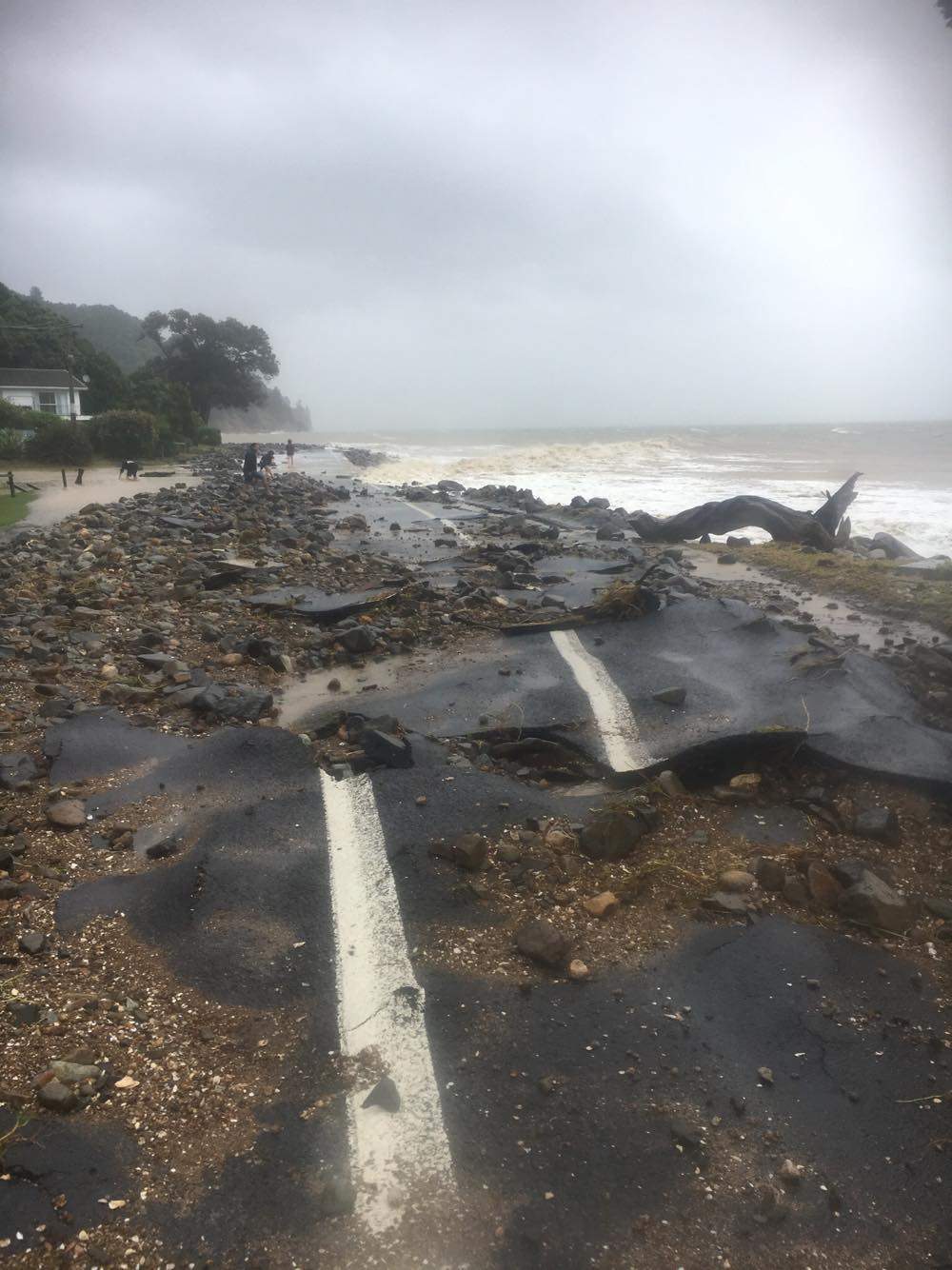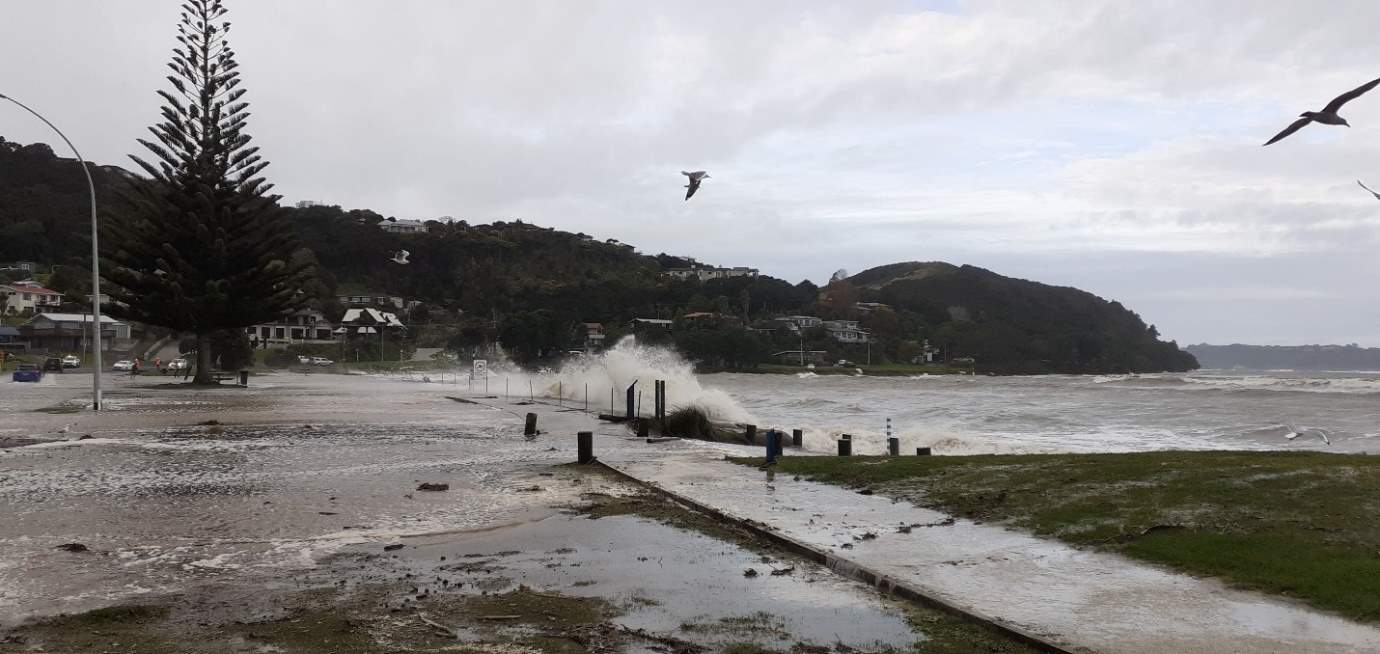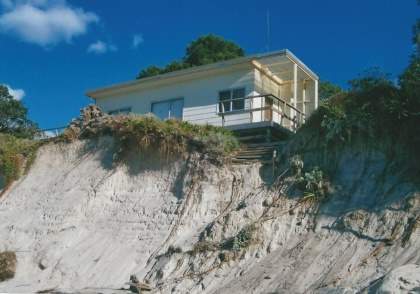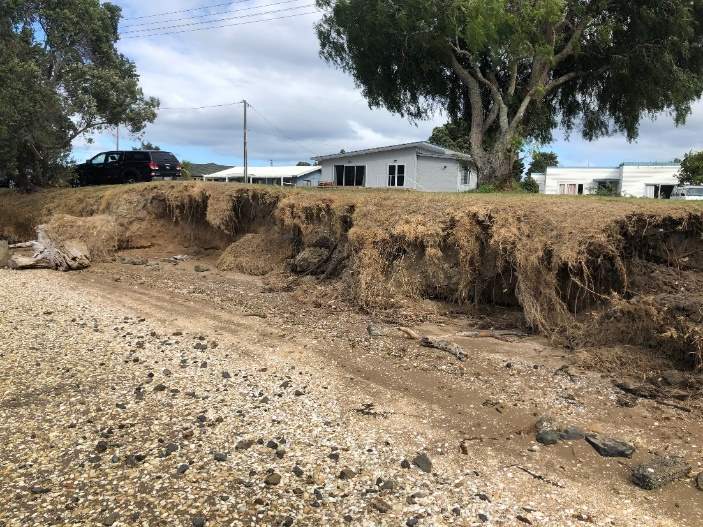Background
“Changing the way we do things – so our people, natural environment, built places and systems are resilient and can adapt – is an enormous challenge. But we can meet it by working together now to understand the risks and taking action to manage them. Alongside central government, local government, the private sector, iwi, hapū , whānau, communities and individuals all have different but complementary roles to play to build a climate-resilient Aotearoa.” Aotearoa New Zealand’s First National Adaptation Plan 2022[1]
In June 2018, following the storm of January 2018, TCDC adopted the Thames-Coromandel Coastal Management Strategy (TCDC, 2018a[5]) which set out the problem, context for and challenge of coastal climate adaptation. The strategy sets out goals, objectives and actions to support the sustainable management of coastal resources, now and for future generations.
In August 2018, Council also approved the Thames-Coromandel Coastal Hazards Policy (TCDC, 2018b[6]) that set out objectives for risk management and levels of service for emergency events at the coast (see "Policy and Statutory Context"). The recognition of the risks posed by coastal hazards to Council assets and community activities led to a significant budget allocation in the 2018-2028 Long Term Plan (TCDC, 2018c[7]) for ‘coastal activities’, with a specific focus on undertaking SMPs.




In April 2019, Council appointed a consortium led by Royal HaskoningDHV (RHDHV) to undertake shoreline management planning for the Coromandel’s 400km of coast. The aim was to establish a framework for the sustainable management of risks to people, property, the environment and tāonga associated with coastal hazards. The output being Coastal Adaptation Pathways (CAPs) that address more immediate short- and medium-term issues in light of how communities may need to adapt in the longer term.
These pathways are intended to reduce the risk from coastal hazards to an acceptable or tolerable level; and develop tailored, flexible solutions to ensure the long-term sustainability and resilience of the Coromandel’s coast communities. They build from the aspirations and concerns of TCDC’s communities and the principles of kaitiakitanga.
The DAPP process recognises that climate change-related coastal hazards are not certain (see "Dealing wih uncertainty"). Consequently, the pathways developed are intended to be flexible and designed to be dynamic (or adapted). If the predicted hazards do not occur, or do not occur as predicted, the pathway can be revised and actions (such as protect or retreat) may not need to be taken. The challenge relates to not acting too early (and investing to mitigate risks that are not realised) or too late.
“How much change we will see, and how fast that change will happen, is not certain. We have greater certainty about change in the medium term but need to plan for longer time horizons. As our climate continues to change, the impacts and risks that we face will evolve.” (MfE, 2022).
This report provides a summary of the project and its outcomes; primarily the development of 138 CAPs; one for each unique stretch of the Coromandel Peninsula’s shoreline (see "Coastal assets"). These dynamic adaptive pathways (see "Dynamic adaptive pathways planning") are intended to set the direction for coastal adaptation and the development of coastal communities that are resilient to climate change for the next 100 years. By their nature, the pathways will require review as new information becomes available, circumstances change or triggers for action are met (see "Next steps").
Footnotes
- 1 MfE (2022). Aotearoa New Zealand’s first national adaptation plan. Wellington. August 2022.
- 2 Te Tiriti o Waitangi, February 6, 1840, https://waitangitribunal.govt.nz/treaty-of-waitangi/te-reo-maori-version/
- 3 DOC (2010). New Zealand Coastal Policy Statement. New Zealand Government, Wellington NZ: December 2010.
- 4 MfE (2017). Coastal Hazards and Climate Change - Guidance for Local Government in New Zealand. December 2017.
- 5 TCDC (2018a). Thames-Coromandel Coastal Management Strategy. TCDC: June 2018.
- 6 TCDC (2018b). Thames-Coromandel Coastal Hazards Policy. TCDC: August 2018.
- 7 TCDC (2018c). Thames-Coromandel 2018-2028 Long Term Plan. TCDC 2018.